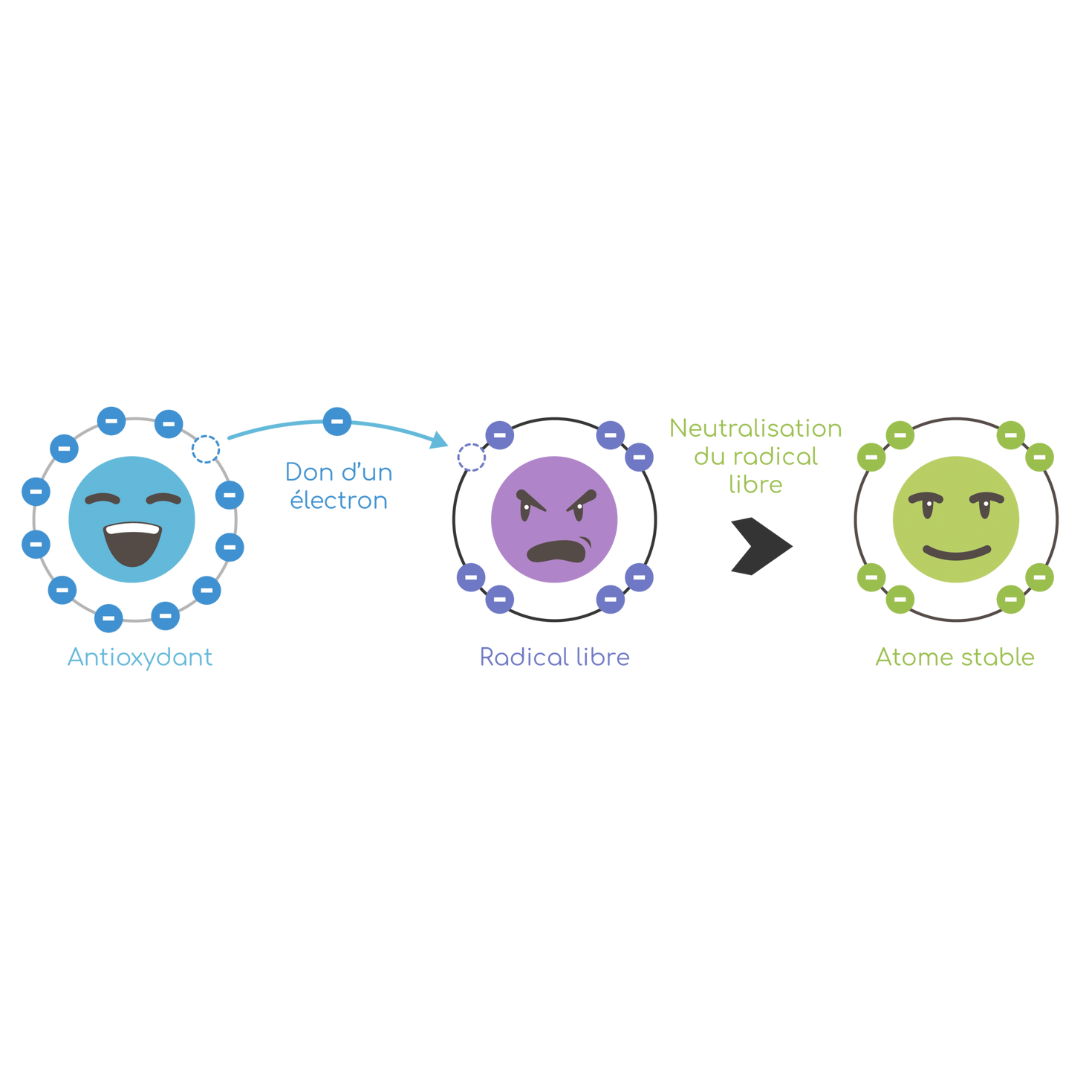
What are the benefits of niacinamide for the skin?
Share
What is niacinamide?
Niacinamide is a form of vitamin, also known as nicotinamide or vitamin B3.
It plays a crucial role in many biological functions essential to the human body. Niacinamide is an ingredient found in many foods such as meat, fish, nuts, seeds and whole grains, but it can also be synthesized by the body from the amino acid tryptophan.

The benefits of niacinamide for the skin
Reinforces the skin barrier
Niacinamide is known to strengthen the skin barrier, helping to protect the skin from external aggressors such as pollution and UV rays.
Studies suggest that niacinamide can positively influence keratinocytes by promoting their differentiation and increasing ceramide levels in the skin.
As they differentiate, keratinocytes synthesize lipids and proteins that help form a protective barrier against external aggressors such as bacteria, irritants and moisture loss.
Increasing ceramides with niacinamide can strengthen the skin barrier, improve skin hydration and reduce transepidermal water loss, contributing to healthier, more resilient skin.
Antioxidant action
As a derivative of vitamin B3, niacinamide acts as an antioxidant, neutralizing the free radicals present in the skin. Free radicals are unstable molecules that can damage skin cells and accelerate the aging process. By neutralizing these free radicals, niacinamide helps protect the skin against damage caused by environmental factors such as the sun's UV rays, pollution and oxidative stress.

Regulates sebum production
For skin prone to excess sebum, niacinamide can help regulate sebum production, reducing the appearance of enlarged pores and minimizing shine and acne problems. This regulation of sebum production helps maintain optimal skin balance, which is essential for healthy, radiant skin.
Reduces brown spots
Niacinamide is also effective in reducing brown spots and hyperpigmentation, helping to even out skin tone and lighten dark areas of the skin. This brightening effect helps to improve the skin's overall appearance, revealing a brighter, more even complexion.
Anti-inflammatory
Thanks to its anti-inflammatory properties, niacinamide can soothe skin irritations, reduce redness and calm sensitive or reactive skin. This makes it an ideal ingredient for those suffering from inflammatory conditions such as eczema or rosacea.
Stimulates collagen production
Niacinamide is also known to stimulate collagen production in the skin, helping to maintain its firmness and elasticity. By stimulating collagen production, this ingredient helps prevent skin slackening and reduce the appearance of fine lines and wrinkles.
How to use niacinamide in your skincare routine?
To reap the full benefits of niacinamide, we recommend incorporating it into your daily skincare routine. Here's how you can use niacinamide in your morning and evening routine:
Morning: after cleansing your face, apply a day cream containing niacinamide. Be sure to choose a lightweight formula that suits your skin type.
Follow with a moisturizer and spf sunscreen to protect your skin from harmful UV rays.
Evening: after cleansing your face, apply a cream or serum containing niacinamide. You can also use products combining niacinamide with other skin-benefiting ingredients, such as hyaluronic acid or peptides.
Finish with a moisturizing cream to seal in moisture and promote night-time skin regeneration.
Which ingredients should niacinamide be used with?
Niacinamide can be used in combination with other ingredients commonly found in skin care products to optimize its action.
Glycolic acid + niacinamide
Glycolic acid is a chemical exfoliant that helps to remove dead skin cells and reveal a smoother, brighter complexion. When combined with niacinamide, glycolic acid can be less irritating to the skin, thanks to niacinamide's soothing properties. This combination can benefit all skin types, especially those prone to dryness or sensitivity.
Stabilized vitamin C + niacinamide
The synergistic combination of vitamin C and niacinamide in skin care offers enhanced antioxidant protection, reduced hyperpigmentation and inflammation, stimulation of collagen production for firmer, more elastic skin, and reinforcement of the skin barrier for improved hydration and protection against external aggressors.
Biologically, they act differently to prevent the appearance of brown spots: vitamin C inhibits tyrosinase, an enzyme required for melanin production, while niacinamide blocks the transfer of pigments into skin cells.
As far as application is concerned, there is no strict rule for the order in which these two ingredients should be applied to your skin.
Hyaluronic acid + niacinamide
The combination ofhyaluronic acid and niacinamide in skincare offers deep, long-lasting hydration thanks to hyaluronic acid's humectant properties, while niacinamide helps strengthen the skin barrier, reduce hyperpigmentation and inflammation, and stimulate collagen production for firmer, brighter, more resilient skin.
Salicylic acid + niacinamide
Niacinamide combined with salicylic acid in a skincare product reinforces the permeability of the hydrolipidic film, thus reducing insensible water loss or skin dehydration.

What not to mix with niacinamide?
Niacinamide is generally compatible with most other skin care ingredients, but for sensitive skin, it's advisable to avoid combining it with products containing high concentrations of exfoliating acids, such as glycolic acid or lactic acid.
Sources
WAN Y. & al. Nicotinamide attenuates aquaporin 3 overexpression induced by retinoic acid through inhibition of EGFR/ERK in cultured human skin keratinocytes. International Journal of Molecular Medicine (2008).
GARG K.V. & al. Cosmeceuticals for Hyperpigmentation: What is Available? Journal of Cutaneous and Aesthetic Surgery (2013).
Wohlrab J, Kreft D. Niacinamide - mechanisms of action and its topical use in dermatology. Skin Pharmacol Physiol. 2014;27(6):311-5. doi: 10.1159/000359974. Epub 2014 Jun 27. PMID: 24993939.
